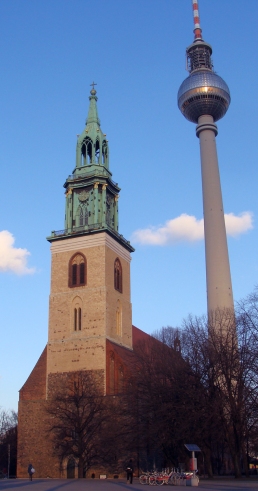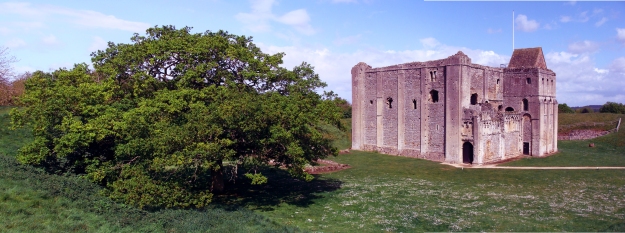
The Fernsehturm towers over Marienkirche near Alexanderplatz.
Berlin’s history of destruction and division has filled it with visually striking architectural juxtapositions as well as made it a breeding ground for ideas in art and design exploring how to react, understand, and effectively handle these cycles of turmoil. In truth, however, Germany has been a hotspot for architecture for longer than since WWII (much longer if you credit them for contributions for Gothic architecture, though that actually originated in France and was later misattributed to Germany in an effort to degrade its cultural significance). In 1919, Walter Gropius established the Bauhaus, a school of art and design that pioneered much of modern aesthetics through careful study of color and geometry as well as a dedication to deference towards creating functional products that were well adapted to industrial mass production. The work of Gropius and his successor at the Bauhaus, Mies van der Rohe, are often cited alongside Frank Lloyd Wright as the beginnings of modern architecture, and it is here that my adventures in Berlin began – I paid a visit to the Bauhaus Archiv.
Continue reading →



